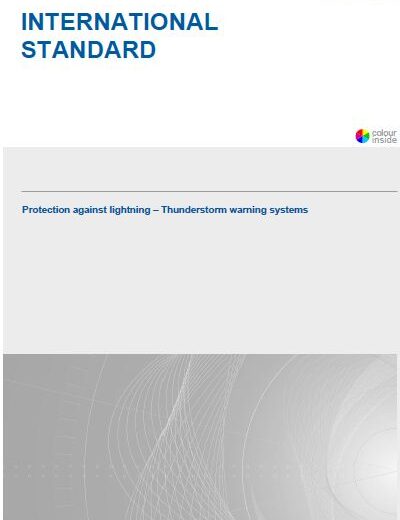The document is internationally applicable and provides information on the characteristics of thunderstorm warning systems in order to implement preventive measures.
The standard specifies in detail the considerations related to the phases of the thunderstorm, classification of detection systems, methods and evaluation of the alarm, as well as instructions on installation and maintenance of prevention systems
IEC 62793 establishes four phases in the evolution of a thunderstorm:
1.- Initial Phase. Electromagnetic field rises.
2.- Growth Phase. Intra-cloud and cloud-to-cloud lightning.
3.- Mature Phase. Cloud-to-cloud and cloud-to-ground lightning.
4.- Dissipation Phase. Number of lightning bolts decreases.
According to these four phases of a thunderstorm, the standard classifies the following detectors:
Class A detectors – Detect thunderstorm during its whole life cycle (phases 1 to 4).
Class B detectors – Detect cloud-to-cloud and cloud-to-ground lightning (phases 2 to 4).
Class C detectors – Detect only cloud-to-ground lightning (phases 3 y 4).
Class D detectors – Detect cloud-to-ground lightning (phase 3) but with limited performance.
In our portfolio, we have prevention systems capable of working from the Initial Phase (Class A Detector), such as our ATSTORM® model which allows for anticipation of the negative side effects of a thunderstorm so as to implement preventive measures.
With active participation, Aplicaciones Tecnológicas, S.A. has promoted the evolution of national and international standards for many years.
